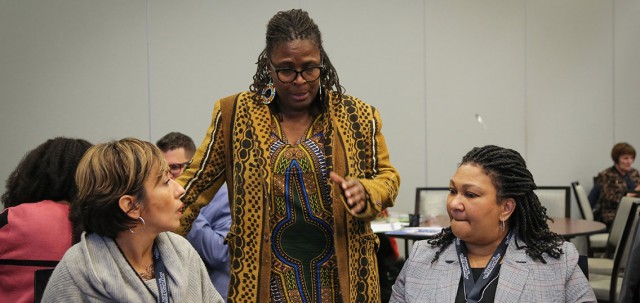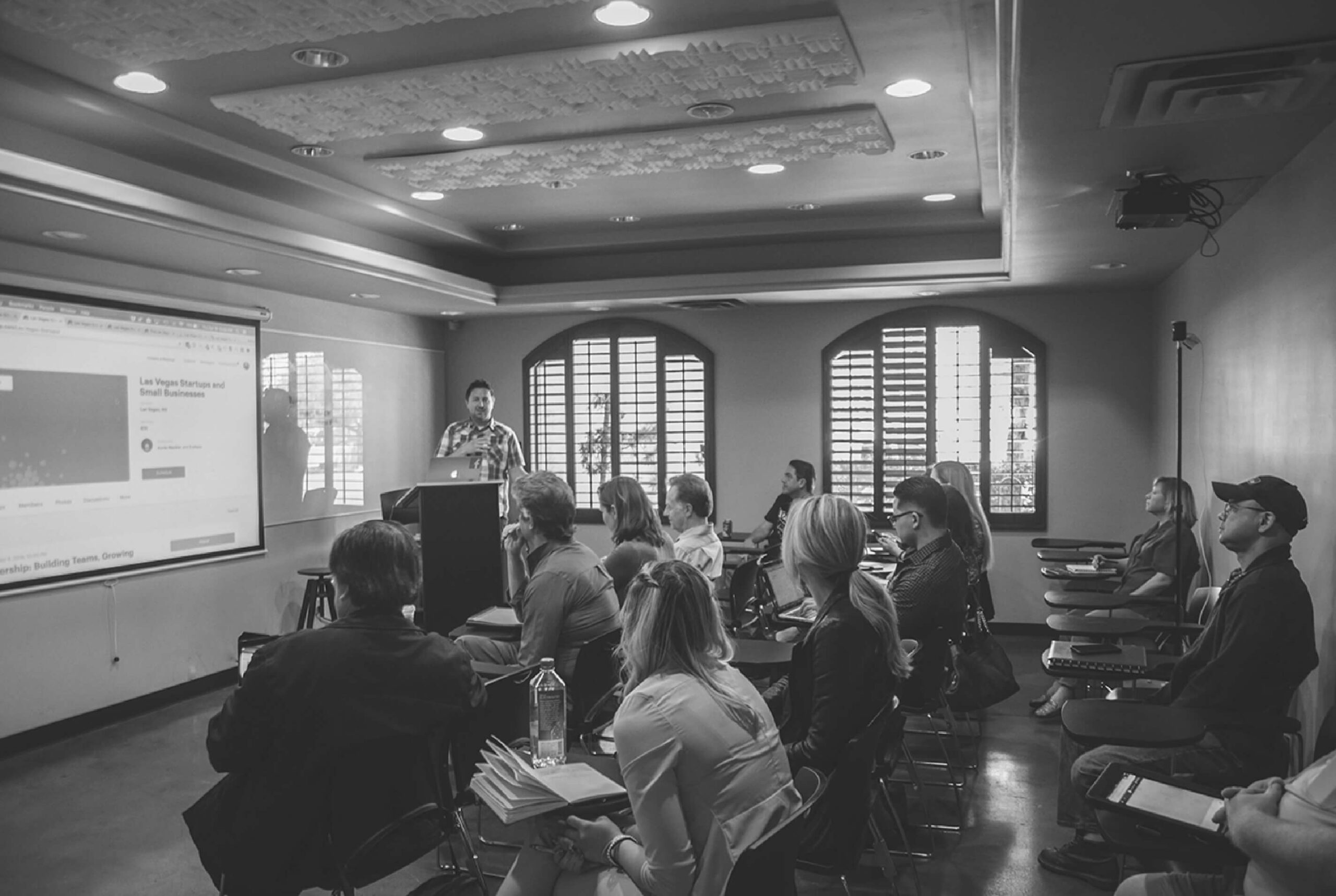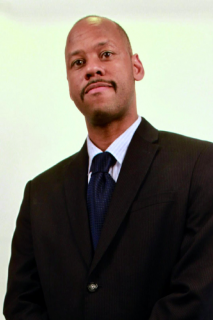
Creating an equity-minded culture is hard work and takes a community of champions to bring to fruition. It takes commitment from all corners of a campus to ensure student pathways and organizational structures and institutional policies and teaching and learning practices are designed in ways that support more equitable outcomes. As members of the Illinois Equity in Attainment initiative (ILEA) developed their Equity Plans for their campuses, the role and engagement of faculty voices was integral, and the theme of our 2020 ILEA Virtual Fall Summit – Engaging Faculty Champions in Equity Work – aptly reflects this. When we think of champions, we think of people who are willing to advocate for a cause they strongly believe in and want to support. With greater numbers of faculty champions on our campuses, ILEA members and other institutions doing equity work move closer to creating an equity-minded culture focused on making sure all students succeed.
As the Partnership for College Completion gears up for next week’s summit, hear from faculty champions at Harold Washington College, Kishwaukee College, and Saint Xavier University on increasing student readiness, empowering faculty of color, and teaching and practice through an equity lens for all faculty.
| Harold Washington College Asif Wilson, PhD, Associate Dean of Instruction Sandy Vue, Assistant Director – Research & Planning Jackie Werner, Associate Dean of Instruction Maria Ortiz, Faculty Bernadette Limos, Director – Strategic Initiatives, Marketing & Communications. |
Kishwaukee College Pernevlon Ellis Jr., MA, Interim Associate Dean, Office of Instruction, Formerly Assistant Professor of Sociology; classes taught include race and ethnic relations, introduction to criminology, marriage and family, and social problems. |
Saint Xavier University Gina M. Rossetti, PhD Professor of English and University Fellow for Student Success; Teach First Year composition classes, introductory literature classes, American literature, and literature/humanities courses in the Honors Program. I have been at Saint Xavier University since 2002. |
Partnership for College Completion (PCC): A core belief of the ILEA community is that colleges and universities should move beyond a focus on college readiness among students and instead strive to be student-ready as institutions of higher education. What does this mean to you and your work?
Harold Washington College (HWC): The position of being college ready may negatively place blame on the student as the sole purveyor of academic success. This notion also assumes that colleges and universities are in no need of transformation. Being student ready requires that we, as schools of higher education turn inward to reflect and transform the harmful mechanisms—practices, policies, and structures—that limit the possibility of living our missions.
Pernevlon Ellis, Jr., MA (ELLIS): Leaders of every postsecondary institution must engage in strategic planning that allows for the greatest flexibility to achieve its mission and vision. This requires setting and assessing realistic goals and making data-informed decisions. The ability to respond to trends in data to use resources appropriately to meet the needs of its stakeholders. The data that exists on achievement gaps must inform policy and practices to address the ability of colleges and universities to achieve equity. The mission and vision of each institution I have read can’t be achieved with addressing these gaps.
Gina M. Rossetti, PhD (ROSETTI): For me, I believe it means beginning with a foundational value: every student is capable of learning. When we focus on only the student’s readiness for higher education, we are attempting to mold him/her into a pre-packaged spot. To offer a more welcoming environment, institutions ought to look at policies, practices, curricula to ensure that all are inclusive for a diverse student body.
PCC: A threat to the long-term success of faculty of color is racial battle fatigue among other factors. In what ways should institutions intervene to empower the success of faculty of color?
HWC: Schools, including spaces of higher education, inherently were not designed with people of color in mind (their histories make this very clear). The supposed invisible offensive mechanisms, as Chester Pierce (1970) called them, are as painful as the physical harm our bodies experience. These assaults not only leave staff, admin, and faculty of color (and other minoritized identities) feeling a sense of isolation, and can have long term negative health outcomes. Professionals of color working in schools of higher education need to feel a sense of belonging, a sense power, and a sense of community if the rates of push out (and unfortunately death) are ever to decrease.
ELLIS: Postsecondary institutions must assess and respond to the structural and cultural barriers to success for its faculty from historically marginalized groups. This includes identifying and addressing the barriers in the process of recruitment, development, and retention. Once barriers have been identified leaders of these institutions must facilitate the inclusion of organizational goals to address these as part of the strategic planning process. This will ensure resources are in place to address the micro insults, assaults and invalidations that lead to racial battle fatigue.
ROSETTI: A couple of approaches can be a faculty mentoring program for faculty mentors of color, which will assist new colleagues in both the tenure process, but also in onboarding colleagues so that they are welcomed into the institution. A second approach is that there must be a commitment from all colleagues at the institution that equity and access are important for all, and that matters are not articulated by faculty members of color. In other words, White colleagues must also engage in an institutional equity scan, identifying with colleagues of color pitfalls and barriers, and working together to eliminate them.
PCC: According to this year’s ILEA Fall Summit keynote speaker, Dr. Estela Bensimon, “equity-minded individuals are aware of the sociohistorical context of exclusionary practices and racism in higher education.” How can your college or university expand awareness of these exclusionary practices that harm faculty, staff and students of color?
HWC: When William Rainey Harper, president of University of Chicago, began advocating for community colleges in the early 1900s, he was not doing so to expand access and opportunity to those who previously not had. Furthermore, the land the University of Chicago was donated to Rockefeller by Illinois Senator Stephan Douglas, who built his wealth from the unpaid labor of his slaves.
The histories of our school reveal their not-so-nice histories, bound in what bell hooks calls white supremacist capitalist patriarchy. By unearthing the oppressive legacies of our institutions (like the fact that Harold Washington College is built on the site of a jail where indigenous tribes were forced to sign treaties) we may be able to dream, and actualize, a world that doesn’t reproduce the historical harm that our schools have.
ELLIS: Motivate employees to work individually and collectively to be a leading culturally competent institution. Encouraging white faculty, staff and administrators to lead these efforts to address the organization’s failure to maintain a culture conducive to the retention and success of faculty and students from historically marginalized racial and ethnic groups. They also need to lean less on faculty and staff of color to do this work.
ROSETTI: First and foremost, we need to listen to the experiences of colleagues and students of color, whose experiences at the institution are often quite different than those experienced by Whites. Second, we need to act upon what we learn from such experiences, working together to identify and prioritize how we can address these barriers.
PCC: During this pandemic, how can faculty integrate an equity and inclusion lens into their teaching and practice?
HWC: We do not believe that creating more equitable contexts requires lots of funding, new positions, or consultants. The praxis required for this sort of transformation must be built on love, care, and compassion. A love that bounds seemingly different people together to develop new knowledge, and hopefully a love that can transform oppression in the world and our schools.
We call faculty in to be mindful of the ways in which their planning, instruction, and assessment align to students’ lives, communities, and center justice. We call administrators in to be mindful of the potential inequitable and harmful consequences of the decisions they are empowered to make. We call staff in to be mindful that they are educators too, every caring and compassionate interaction the students you serve can have long lasting, and transformational impacts. Together, we all can create the conditions in our schools that honor each other, in all that we have to offer.
ELLIS: Faculty are working diligently to facilitate learning that allows students to achieve the mastery of knowledge and skills expected in every discipline. Information and communication technologies are allowing for great creativity in the delivery of course content. Ensuring that we all engage in positive micro-messaging in our communications with students will be important. Interaction with students should be empowering to help those without it to develop the grit necessary to achieve academic success while enduring the challenges that accompany this pandemic.
ROSETTI: In many ways, the pandemic has intensified gaps, particularly in terms of technology and access to it (whether it is Wifi or personal technological devices that are not shared among family members). As a faculty member, I meet one-on-one with my students throughout the semester, and the same approach can be enhanced via technology. These conferences occur—both as regularly scheduled meetings—but also after assignments where I have seen a student struggle with the project. In reaching out to the student, I show him/her that I care about his/her academic success, and that we can work together to make the success a reality.
—
Join PCC on Friday, October 16 from 11a-12p CT for our first Twitter Chat: The Importance of Faculty Champions in Equity Work. Follow us @partnershipfcc and use the hashtag #PCCchat.




